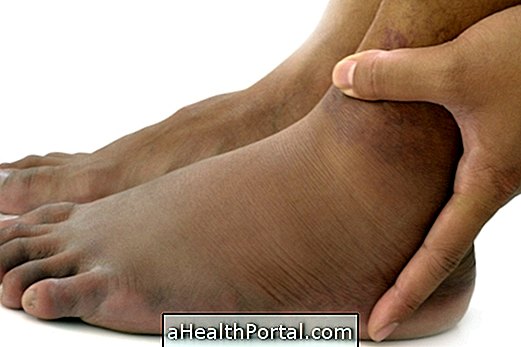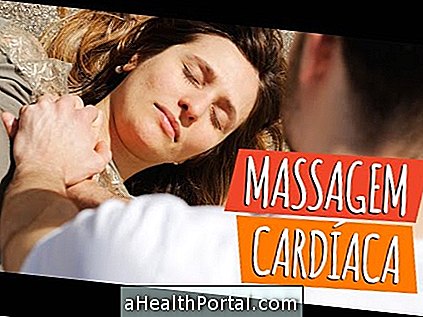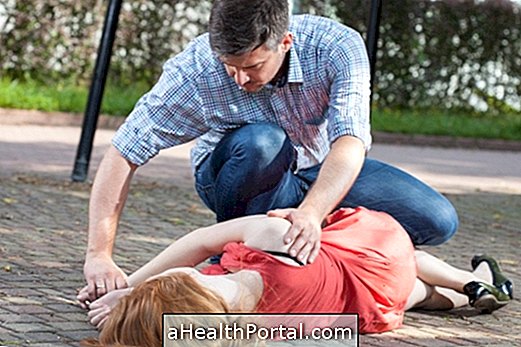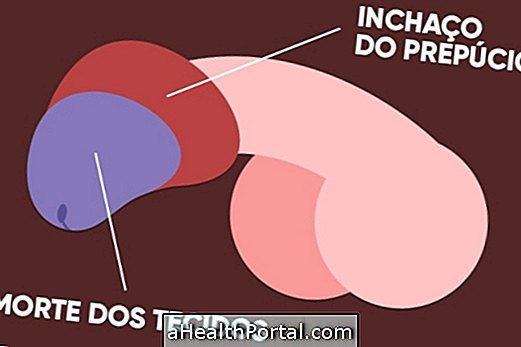Post-traumatic stress is a psychological disorder that causes excessive fear after very shocking, frightening or dangerous situations such as participating in a war, being abducted, robbed or suffering from domestic violence, for example. In addition, in some cases, the disorder can also happen due to a sudden change in life, such as losing someone very close.
Although fear is a normal reaction of the body during and shortly after such situations, post-traumatic stress causes constant fear during daily activities such as shopping or being at home alone watching television, even when there is no apparent danger .

To identify if someone is having post traumatic stress it is important to be aware of various types of symptoms, which include:
1. Symptoms of revival
- Have intense memories about the situation, which cause increased heart rate and excessive perspiration;
- Being constantly with scary thoughts;
- Having frequent nightmares.
This type of symptoms can arise after a specific feeling or after observing an object or hearing some word that was related to the traumatic situation.
2. Symptoms of shaking
- Feeling often tense or nervous;
- Having trouble sleeping;
- Be easily scared;
- Have angry outbursts.
These symptoms are frequent, not being triggered by any specific situation and therefore can affect many basic activities such as sleeping or concentrating on a task.
3. Symptoms of avoidance
- Avoid going places that remind you of the traumatic situation;
- Do not use objects that are related to the traumatic event;
- Avoid thinking or talking about what happened during the event.
Generally, this type of symptoms causes changes in the daily routine of the person, who stops doing activities that he did previously, such as using the bus or the elevator, for example.
4. Mood symptoms changed
- Have difficulty remembering several moments of the traumatic situation;
- To feel less interest in pleasant activities, like going to the beach or going out with friends;
- Having distorted feelings like feeling guilty about what happened;
- Have negative thoughts about yourself.
Cognitive and mood symptoms, although they are common in almost all cases soon after the trauma, disappear after a few weeks, and should only be of concern when they worsen over time.
How to confirm the diagnosis
To confirm the existence of post traumatic stress is advised consult a psychologist, to clarify the symptoms and initiate appropriate treatment if necessary.
However, it is possible to suspect this disorder when, during a month, at least 1 symptom of revival and avoidance appears, as well as 2 symptoms of agitation and mood.
How is the treatment done?
The treatment of post-traumatic stress should always be guided and evaluated by a psychologist or psychiatrist, since it must be constantly adapted to help each person overcome their fears and alleviate the symptoms that arise.
In most cases, treatment begins with sessions of psychotherapy, in which the psychologist, through conversations and didactic activities, helps to discover and overcome the fears developed during the traumatic event.
However, it may still be necessary to use a psychiatrist to initiate the use of antidepressant or anxiolytic medications, for example, which help to alleviate the symptoms of fear, anxiety and anger more quickly during treatment, facilitating psychotherapy.
If you have had a very stressful situation and are often scared or anxious, this may not mean that you are having post-traumatic stress. So try our anxiety-control tips to see if they help, before looking for a psychologist, for example.


















